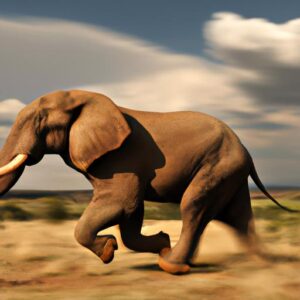Introduction
Giraffes are undeniably fascinating creatures, known for their towering height, long necks, and distinctive patterns. As we delve into the world of these majestic animals, a common question arises: do giraffes have horns? This inquiry opens up a realm of exploration into the anatomy and evolutionary history of giraffes, shedding light on the unique features that set them apart in the animal kingdom.
Giraffes possess a myriad of captivating characteristics that make them stand out among other wildlife. From their graceful movements to their social behaviors, these gentle giants never fail to capture our attention. However, it is their enigmatic head adornments that often spark curiosity and intrigue. Let’s embark on a journey to uncover the truth behind giraffes and their supposed horns, unraveling the mysteries of their anatomy and shedding light on the role of ossicones in their lives.
Anatomy of a Giraffe
Physical Features of a Giraffe
Giraffes are known for their unique physical attributes that set them apart in the animal kingdom. With their long necks, slender legs, and distinct coat patterns, these gentle giants exude grace and elegance in their every movement. Their elongated necks, comprising seven cervical vertebrae like most mammals, enable them to reach high branches for feeding, showcasing their remarkable adaptation to their environment.
The Role of Ossicones
One of the most intriguing features of a giraffe is the presence of ossicones on their heads. These bony protuberances may resemble horns at first glance, but they differ in composition and function. Ossicones are ossified cartilage structures covered in skin and fur, serving various purposes for giraffes. Unlike horns, which are permanent and composed of bone, ossicones are more flexible and may be present from birth or develop later in life, depending on the giraffe species. Let’s delve deeper into the significance of ossicones in the life of a giraffe and unravel the mysteries behind these unique head adornments.
The Purpose of Ossicones
Function of Ossicones on a Giraffe’s Head
Ossicones, the bony protuberances adorning the heads of giraffes, serve a multitude of purposes in the lives of these majestic creatures. Despite their resemblance to horns, ossicones are structurally distinct and play a vital role in various aspects of a giraffe’s existence. These prominent features are not merely ornamental but serve practical functions that contribute to the survival and well-being of giraffes in their natural habitat.
Defense, Mating Rituals, and Thermoregulation
One of the primary functions of ossicones is as a means of defense for giraffes. During inter-species conflicts or territorial disputes, male giraffes utilize their ossicones to engage in “necking” behavior, a ritualized combat that showcases dominance and strength. Additionally, ossicones play a crucial role in mating rituals, where male giraffes use these prominent structures to assert their dominance and attract potential mates.
Moreover, ossicones aid in thermoregulation, helping giraffes regulate their body temperature in the hot African savannas. By dissipating excess heat and promoting air circulation, these bony projections contribute to the giraffe’s ability to thrive in diverse environmental conditions. Overall, the multifaceted functions of ossicones highlight the intricate adaptations of giraffes and their remarkable evolution in the natural world.
Myth vs. Reality: Horns vs. Ossicones
Debunking Common Misconceptions
Despite popular belief, giraffes do not possess horns in the traditional sense. The protrusions on a giraffe’s head are known as ossicones, which are structurally different from horns found in other animals. Ossicones are bony outgrowths covered in skin and hair, serving various functions unique to giraffes. By clarifying this misconception, we can appreciate the true nature of these fascinating creatures and the evolutionary adaptations that define them.
Differentiating Horns and Ossicones
To understand the distinction between horns and ossicones, it is essential to examine their anatomical differences. While horns are permanent structures composed of keratin and bone, ossicones are extensions of the skull that fuse to the skull’s underlying bones. This distinction highlights the specialized nature of ossicones in giraffes, providing insight into their evolutionary development and ecological significance. By unraveling the complexities of giraffe anatomy, we can dispel myths and embrace the wonders of the natural world.
Evolutionary History of Giraffes
Overview of Giraffe Evolution
Giraffes have a rich evolutionary history that dates back millions of years, showcasing their remarkable adaptations and survival strategies. Through the ages, these graceful creatures have undergone significant changes to thrive in diverse environments. From their elongated necks to their sturdy legs, every aspect of a giraffe’s anatomy tells a story of evolution and adaptation.
Evolution of Ossicones
One of the most intriguing aspects of giraffes’ evolution is the development of their ossicones. These bony protrusions on their heads have evolved over time, serving various purposes in their lives. From protection against predators to social interactions within their herds, ossicones play a crucial role in the daily lives of giraffes. Understanding the evolutionary journey of these unique features provides valuable insights into the complex world of giraffes and their remarkable survival strategies.
Conclusion
In conclusion, the question “do giraffes have horns” unveils a fascinating aspect of giraffe biology that showcases the intricate design of these magnificent creatures. Through our exploration of giraffe anatomy, we have discovered the significance of ossicones and their multifaceted roles in a giraffe’s life. By understanding the evolutionary history and unique adaptations of giraffes, we gain a deeper appreciation for the complexity of nature’s creations.
As we marvel at the beauty and grace of giraffes, let us remember the importance of preserving their natural habitats and protecting these gentle giants for future generations to admire. The next time you gaze upon a giraffe, take a moment to appreciate the wonders of the animal kingdom and the remarkable features that make each species truly extraordinary. Giraffes may not have horns, but they certainly possess a charm and allure that captivates all who encounter them in the wild.




